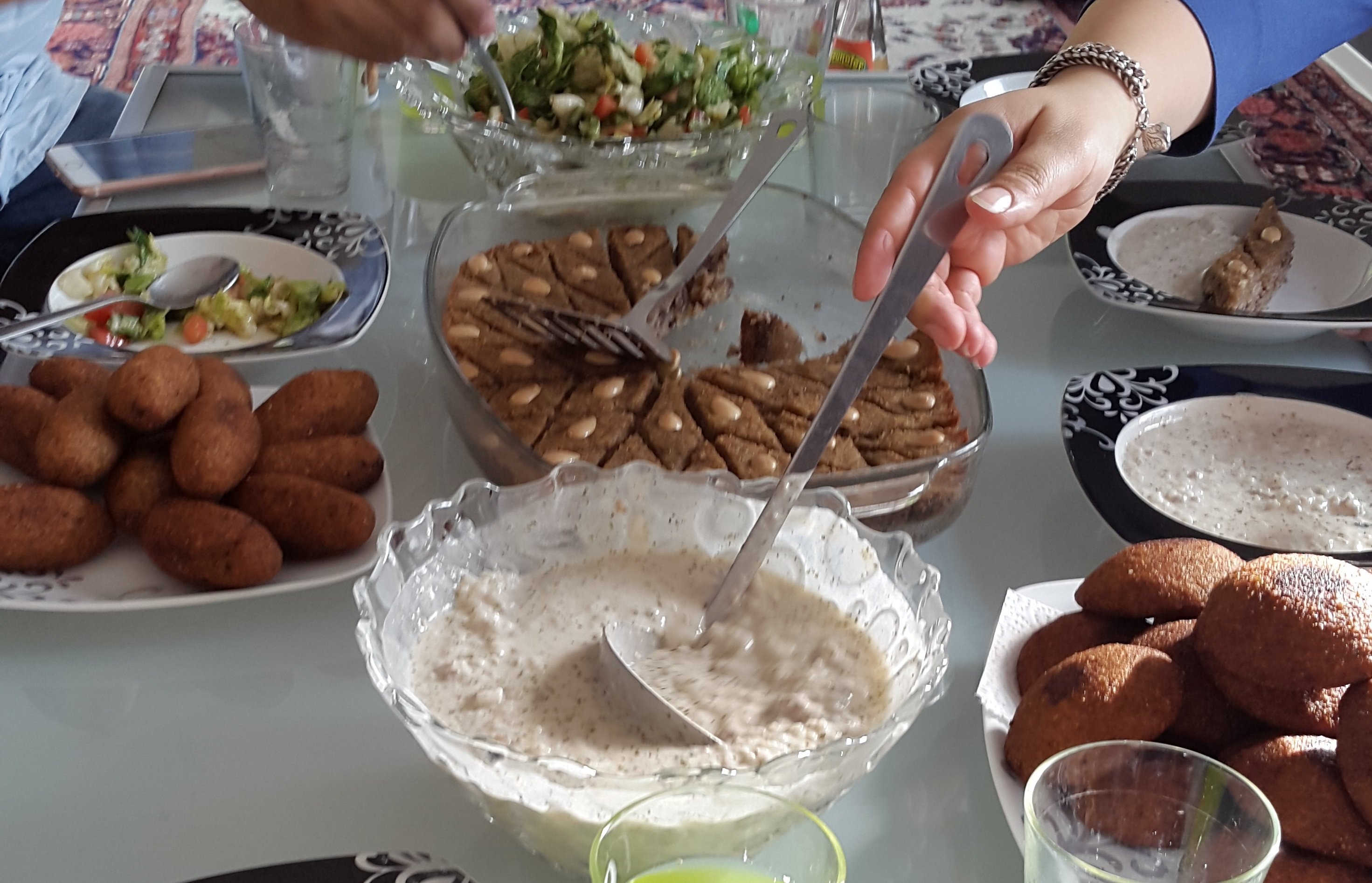Aleppo has been known for centuries for its food. Like many gastronomic centers, the city was blessed with a set of circumstances: a location on key trading routes, a diverse population, a prosperous middle class, and a place amidst the most fertile farms in Syria.1 This created a diverse cuisine that blended elements from its various ethnic and religious groups. Unfortunately, war has put all of this at risk. Much agricultural land is cut off, restaurants are closed, food is in short supply, and destruction has nearly halted food production. With many of its people scattered around the world, there is a risk of the loss of knowledge and skills. Not only is there a need to preserve food ways, but Aleppian cuisine is an important aspect of identity that once bound people together and might do so again.
Aleppian food is distinct in many ways. It uses a wider variety of spices than most Levantine cooking, in part because of its long history as a stop on the spice routes between Asia and Europe, the spice trade that was a key source of wealth in the middle Ages when Aleppo was a key entrepôt. Fruits are often combined with savory flavors, as they are in Persian-influenced foods. Aleppo pepper adds a gently spicy note to many dishes while pistachios—known in Arabic as Aleppian nuts (fustok halabi) bring their richness and beautiful bright green color.
With up to 60% of the city destroyed, much of its heritage damaged, and many of its people driven into exile. There is a real danger that the centuries-old food heritage may well be lost. Aleppian food culture existed in homes and in many food establishments from cafes, bakeries, through to expensive restaurants. It was a unifying force in the city before the conflict, and even today, amid a terrible war, bakeries, urban gardens, and markets are at the center of life.
There are real threats to the production of foods around the city. It will be important not only to safeguard agricultural production but also to find ways to support it in the midst of the conflict through supporting urban farms and assisting farmers outside the city. As people are dispersed, it will be important to preserve food culture in places such as refugee camps by training new generations of farmers and cooks, and ensuring that knowledge is not lost.2
To read the full report please click here.
Michael Shamah is a British archaeologist of Aleppian descent. He has an MA in Cultural Heritage Studies from CEU and is currently contributing to a number of related projects. This report was written as part of the Aleppo Project Course (2015-2016) at the CEU School of Public Policy.
See also Tonia Asimakopoulou’s paper on Reviving Aleppo’s Gastronomic Past, here.
[1] Dimah, “To Aleppo With Love—Introduction, Part 2,” Orange Blossom Water. 24 January 2015, para. 1, Accessed 16 July 2016. http://www.orangeblossomwater.net/index.php/2015/01/24/to-aleppo-with-love-introduction-part-2/
[2] It takes an average of 17 years for refugees to return home, according to the United Nations, and in that time, there is a risk of skills disappearing.
 The Aleppo Project
The Aleppo Project